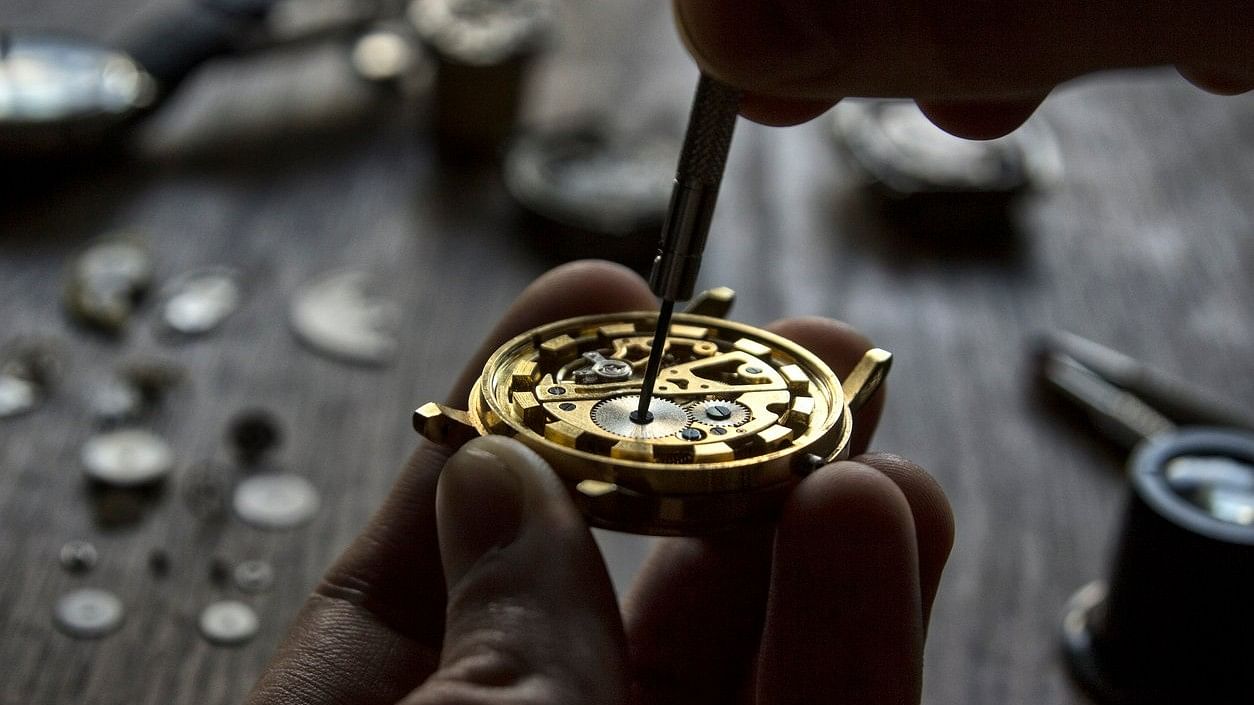
Representative image
Credit: iStock Photo
I am very fond of old watches. I’m particularly nostalgic about desi (read HMT) watches, which seemed to be made for everyone—some sleek and round; some heavy and squarish. People of different classes all wore HMT. I liked winding the key on the manuals and listening to the constant ticking sound distinct from the periodic clicks of battery watches.
I was crestfallen when HMT’s closure was announced, making these once ubiquitous watches a thing of the past. So I decided to stake out and buy one of my own before time ran out. But the question was, where?
High-end stores in Bengaluru didn’t keep HMT, and the company showrooms were often out of stock. This led me down the old markets of Chickpete, Upparapete, Balepete, and the bylanes off Commercial Street, where I spent many evenings after finishing up in court, scouting for watch stores. Bemused shopkeepers would initially try to show me newer brands—shinier, sleeker, and more popular. Finally, they would relent, saying nobody asked for HMT anymore.
Over time, these old timekeepers of Bengaluru became friends, indulging my maddeningly specific inquiries. I remember once showing a screen grab from the movie Newton, featuring a specific HMT. Instead of laughing at my face, the store owner nodded and said he knew the exact model.
They were always kind to this strange boy, who only wanted what people didn’t. One storekeeper refused to believe that HMT Watches had shut down, insisting that government stuff never shuts down. It is forever. Another proudly showed me a framed certificate, declaring him a trained HMT watch technician. He told me how big and fancy the factory had been and how there was an HMT cinema hall in the Jalahalli Township. Sometimes they would show me the different mechanisms making these watches tick over cups of chai.
Several HMT watches are privately retailed online. But this never appealed to me. Turning like a watch dial in intertwined market lanes and coming upon a nondescript store was always more thrilling. I figured out which places had the best Irani chai and the yummiest khowa-filled dilpasand, occasionally bowed my head at old shrines amidst the chaos, and shared an intimacy with the city that had become home.
Over the years, sojourns into the heart of the city became less frequent. I had acquired quite a few watches and didn’t feel like buying more. But recently, I was out with a friend, walking close to Commercial Street. Turning a corner, I suddenly came face-to-face with a watch store I used to frequent. I told my friend I’d show them something interesting and took them by the hand towards the store.
A familiar world opened up inside. The shopkeeper recognised me and, after offering chai, announced that something really special had come to his store. He then went into the recesses and came out with a Hegde & Golay watch, the model called the “Tejus.”
Hegde & Golay was a private watchmaker in Bangalore attempting the seemingly impossible in pre-liberalisation India, competing with the HMT behemoth. Mr Hegde tied up with Bernard & Golay SA, a Swiss watch manufacturing firm, hence the name. It made a few lakh timepieces that were truly world-class while in the show, which was not for very long.
In the era of license raj, it had a bitter feud with the State Bank of India and other government entities, allegations of forgery, dozens of court cases, and eventual closure. But it represented a particular moment in Indian industry, ahead of its time and a harbinger of things to come.
I took the watch in my hand, tried it on, and fell in love. But I also knew that Hegde & Golay were rare and gingerly asked the price. The elderly gentleman looked at me with a smile on his lips and said, “I have seen you for years. You like this kind of stuff. I know you will keep it safe. Pay what you like.”
The edges of my eyes started stinging. Lowering my head and pretending to look at the watch, I asked him again. I know he quoted a number much lower than what he would ordinarily get.
I was soon walking away with a piece of the economic and industrial history of Bengaluru and of India that only came onto my wrist through the friendship of the people of this city. If memory serves me right, the end of the street had a place that baked fresh dilpasand.
(The writer is an assistant professor, the National Law School of India University, Bengaluru)